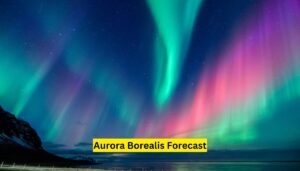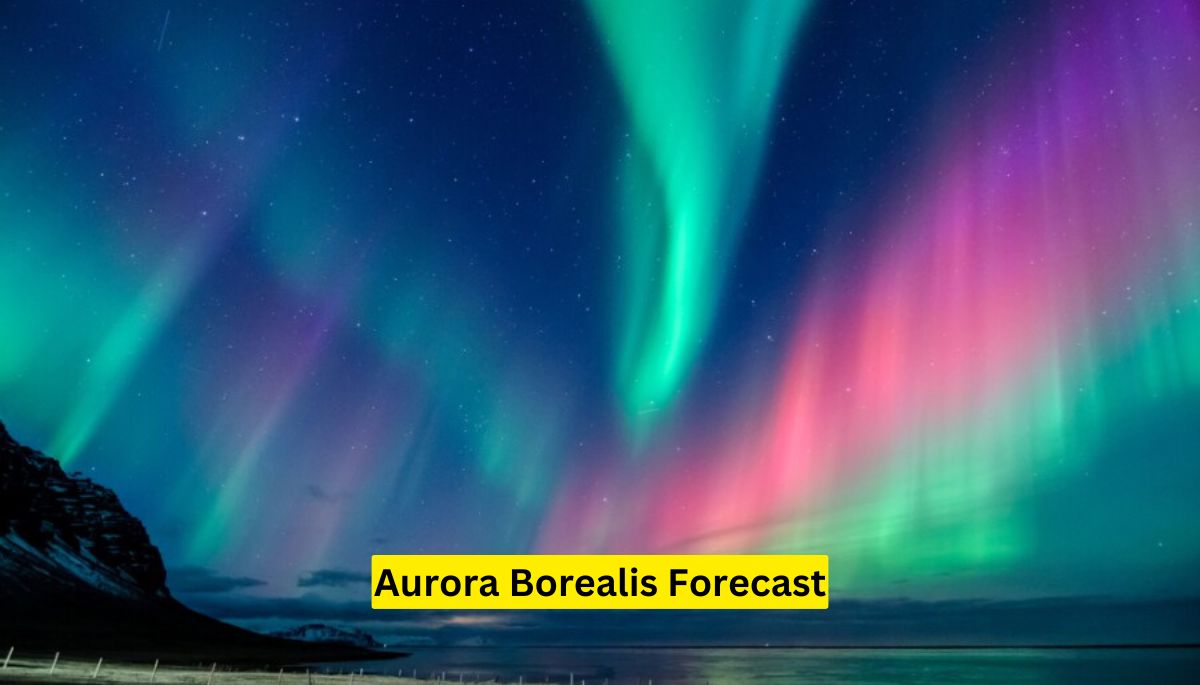Aurora Borealis Forecast Northern Lights in the U.S.: A Detailed Overview
The Aurora Borealis, also known as the Northern Lights, is a natural light display that has captivated humans for centuries. These vibrant, colorful displays are most commonly seen in areas near the poles, but on certain occasions, the auroras can be visible much farther south, including in parts of the United States. With more people gaining interest in this magnificent spectacle, it’s no surprise that people are constantly searching for the aurora borealis forecast in U.S. states.
In this article, we’ll explore how the Northern Lights occur, how to read forecasts for optimal viewing, and which U.S. states might offer a glimpse of this otherworldly phenomenon. Additionally, we’ll cover how environmental and space weather factors contribute to visibility and what you can expect in the near future when hunting for this celestial show.
What Causes the Aurora Borealis?
The Northern Lights are the result of charged particles from the sun colliding with Earth’s magnetic field. These solar particles, primarily electrons and protons, interact with gases like oxygen and nitrogen in the Earth’s atmosphere, causing the dazzling displays of light. The colors seen during an aurora depend on the type of gas involved and the altitude at which the particles interact.
For example:
- Green: The most common color, caused by oxygen particles at around 60 miles above Earth.
- Red: Produced by high-altitude oxygen, at heights of up to 200 miles.
- Blue and Purple: These hues come from nitrogen and are typically seen at lower altitudes.
Understanding this interaction is key to knowing when and where you might see the aurora, as certain conditions make it more likely to occur.
How to Read an Aurora Forecast
The most important tool for aurora hunters is the aurora forecast. This forecast tells you how likely it is that the Northern Lights will be visible from a given location, based on solar activity and geomagnetic conditions. One of the main indices used in aurora forecasting is the Kp index, which ranges from 0 to 9. The higher the Kp index, the more likely you are to see auroras at lower latitudes.
- Kp 0-2: Auroras are only visible at high latitudes, like Alaska and northern Canada.
- Kp 3-4: You might catch a glimpse of the aurora in northern U.S. states like Minnesota or Maine.
- Kp 5-6: The auroras can reach states as far south as Iowa, Michigan, or Pennsylvania.
- Kp 7-9: If the Kp index reaches these levels, states like Nebraska, Kansas, or even Oklahoma could experience the Northern Lights.
Many websites and apps offer real-time aurora forecasts, so staying updated is essential if you’re planning to witness this spectacle.
Top U.S. States to See the Northern Lights
While northern states have the best chances of seeing the aurora, solar activity sometimes allows people farther south to catch a glimpse. Based on previous aurora forecasts, here are some of the best U.S. states for aurora viewing:
1. Alaska
As one of the most northerly U.S. states, Alaska is the ultimate destination for Northern Lights viewing. Towns like Fairbanks offer the most consistent chances of seeing auroras, especially during the long winter months.
2. Minnesota
Minnesota is another prime spot, especially near the Boundary Waters and Voyageurs National Park. Its location and vast areas of wilderness make it ideal for viewing the aurora.
3. Michigan
The Upper Peninsula of Michigan has frequent sightings of the Northern Lights, especially near Marquette and Tahquamenon Falls. With little light pollution, this region is perfect for aurora watchers.
4. Maine
Maine’s proximity to Canada means that it often experiences high aurora activity. Aroostook County and Acadia National Park are popular spots for catching the lights.
5. Montana
Wide-open spaces and minimal light pollution make Montana a great place for aurora viewing. Glacier National Park often sees aurora activity, especially during geomagnetic storms.
6. North Dakota
Theodore Roosevelt National Park and other parts of western North Dakota offer some excellent opportunities for Northern Lights viewing during heightened solar activity.
7. Wisconsin
Northern Wisconsin, especially near Apostle Islands and Bayfield, provides great chances to see the aurora. The lights tend to be visible here when the Kp index is moderately high.
8. Idaho
While not commonly associated with auroras, northern Idaho can have sightings during strong geomagnetic storms. The state’s mountainous regions offer breathtaking views of both the aurora and the night sky.
9. Washington
Western Washington, particularly the northern regions, can see the aurora on occasion. Areas near Mount Baker and North Cascades National Park offer prime viewing spots.
10. New Hampshire
The White Mountains in New Hampshire offer some of the darkest skies in the northeastern U.S., making them an excellent spot for catching the Northern Lights when conditions are right.

Best Time of Year for Viewing the Aurora Borealis
Although the Northern Lights can technically be seen year-round, they are more common in the fall and winter months, particularly between September and April. This is due to the longer, darker nights, which provide a better backdrop for the lights.
In addition to the season, the best viewing times are usually between 10 PM and 2 AM, when the skies are darkest. Keep in mind that clear skies are essential for viewing, so checking the weather forecast is just as important as monitoring aurora predictions.
Factors That Affect Aurora Visibility
Several environmental factors can impact your ability to see the aurora:
1. Solar Activity
The primary driver of auroras is solar activity. During periods of increased solar flares and coronal mass ejections (CMEs), the Northern Lights can be more intense and visible at lower latitudes.
2. Geomagnetic Storms
Geomagnetic storms occur when solar winds interact with Earth’s magnetic field, increasing aurora activity. The stronger the storm, the farther south the aurora can be seen.
3. Light Pollution
Areas with minimal light pollution offer the best chances of seeing the aurora. Urban areas with bright city lights can significantly reduce visibility, so it’s best to travel to rural or remote areas for the best views.
4. Cloud Cover
Even if geomagnetic conditions are favorable, cloud cover can block your view of the aurora. Make sure to check local weather forecasts for clear skies before heading out.
Tools and Apps to Track Aurora Forecasts
If you’re serious about catching the Northern Lights, several websites and apps can help you stay updated on aurora forecasts. Some of the most popular include:
- NOAA Space Weather Prediction Center: Offers real-time updates on geomagnetic storms and aurora forecasts.
- Aurora Alerts: This app provides customizable alerts based on your location and the current Kp index.
- My Aurora Forecast: A user-friendly app that gives a detailed breakdown of where and when the aurora might be visible.
These tools help you stay prepared and increase your chances of seeing the aurora, especially during periods of heightened solar activity.

How to Photograph the Northern Lights
Capturing the aurora on camera requires a bit of preparation and the right gear. Here are some tips:
- Use a tripod: The aurora is best photographed with long exposures, so a tripod is essential to avoid blurry images.
- Adjust your camera settings: Set your camera to a low ISO (between 400 and 800) and a slow shutter speed (5-30 seconds) to capture more light.
- Manual focus: Set your lens to manual focus and adjust it to infinity to capture the sharpest images of the aurora.
- Bring extra batteries: Cold temperatures can drain batteries quickly, so be sure to bring extras.
Read more – asheville nc flooding
Conclusion
While seeing the Aurora Borealis is never guaranteed, understanding the conditions that lead to its appearance and staying informed through aurora forecasts can significantly improve your chances. From the northernmost parts of Alaska to unexpected sightings in places like Montana and Minnesota, the U.S. offers plenty of opportunities for witnessing this spectacular display.
#AuroraBorealisForecast
#NorthernLightsPrediction #AuroraActivityUpdate
#BestTimeToSeeAurora #NorthernLightsTonight #AuroraForecastAlert
#AuroraViewingConditions #AuroraHunting
#NorthernLightsForecast2024 #AuroraBorealisWeatherUpdate
asheville flooding#flooding#asheville#asheville news#asheville flooding helene#asheville flooding 2024#flooding in asheville nc#asheville nc flooding deaths#asheville local news#asheville nc flooding biltmore village#nashville#nashville tennessee#flooding in asheville#asheville flooding now#asheville flooding live#asheville flooding 1916#asheville flood#asheville flooding today#asheville flooding storm#asheville flooding near me
